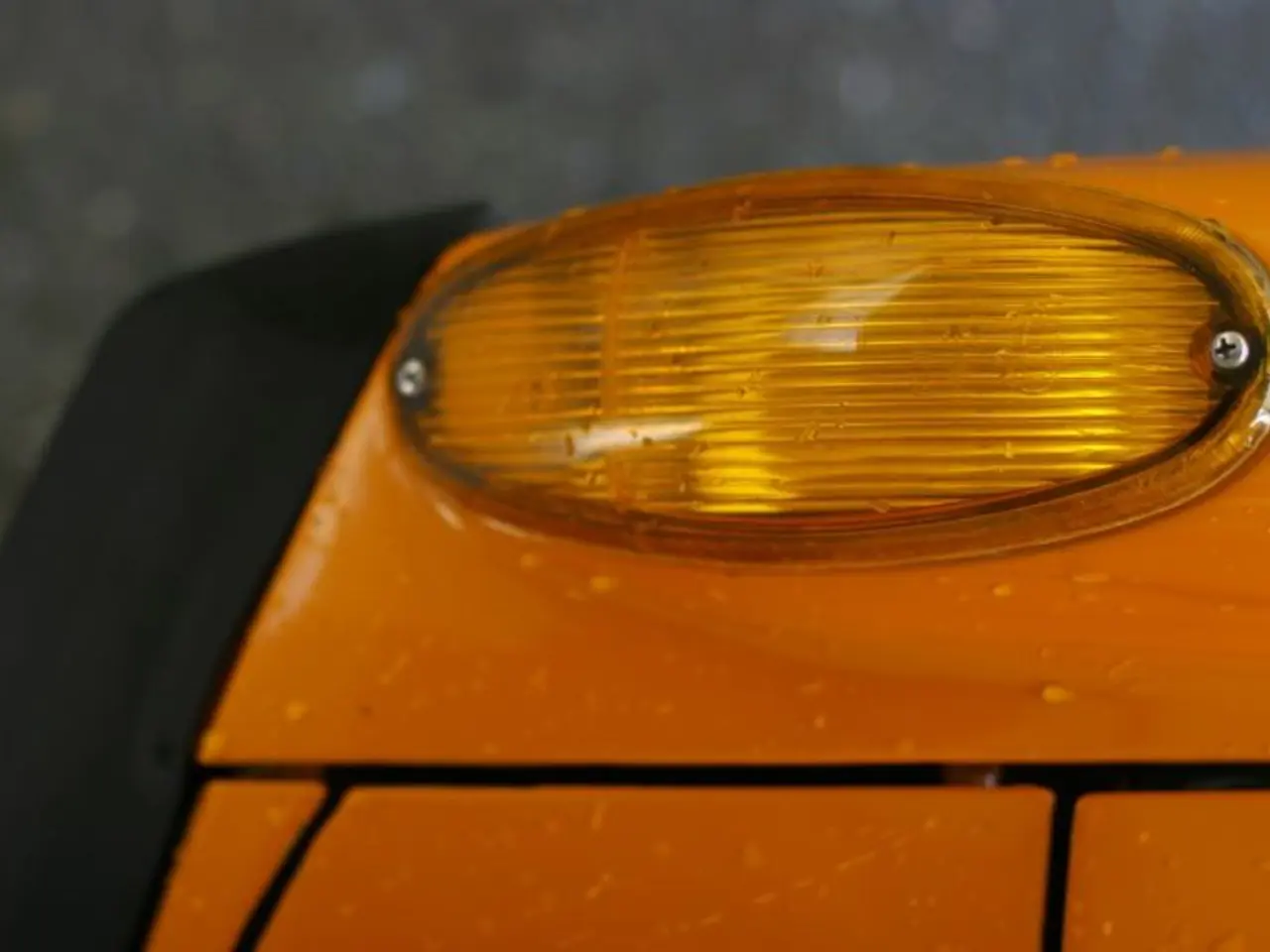Driving's pleasure diminishing due to bothersome headlight glare?
Headlight Glare: A Growing Concern on the Road
Headlight glare, a common issue affecting drivers, particularly those towing a caravan, has become a significant concern due to the use of high-intensity modern headlights. These lights, often LEDs, emit bright, sometimes misaligned, and bluish light, impairing the vision of oncoming drivers.
According to a study by the Royal Automobile Club (RAC) and the Automobile Association (AA), headlight glare has been linked to an average of 280 collisions a year since 2013, where dazzling headlights were a factor. The AA found that 76% of drivers are blinded by the headlights of oncoming vehicles, and more than half (52%) have been dazzled by headlights from cars behind them.
The problem is exacerbated by factors such as elevated headlight heights in SUVs or trucks, improper beam alignment, and dirty or damaged headlight lenses.
Solutions to this issue include adaptive and intelligent headlight systems that reduce glare dynamically, regular headlight maintenance and alignment, the use of anti-glare films or coatings, and driver aids such as night driving glasses.
Modern vehicle headlights can exceed 100,000 candela in intensity, causing significant temporary visual acuity reduction and increased recovery times for affected drivers. This poses a particular safety risk for night driving, especially when towing a caravan due to potential distractions and visibility challenges.
Recent developments like Polymer Dispersed Liquid Crystal (PDLC) films integrated with Light-Dependent Resistor (LDR) sensors can detect incoming light intensity and adjust opacity to block glare automatically, potentially reducing incoming light by over 99% at close distances to improve driver comfort without compromising safety.
Intelligent LED beam systems can selectively dim and shape the beam pattern to maximize visibility for the driver while minimizing glare for others. Supplemental curve lighting can also aid safe navigation without increasing glare.
Regular headlight maintenance, cleaning, buffing, and restoring headlights to remove cloudiness or yellowing from UV exposure can improve light output control and reduce scattered glare. Proper headlight alignment, ensuring headlights are correctly aimed so beams do not shine excessively into oncoming drivers’ eyes, is a crucial, simple step.
Night driving glasses that reduce blue light and glare can help vulnerable drivers, especially older individuals who are more impacted by glare due to eye changes. In extreme cases, medical options like eyelid surgery may reduce glare reflections.
Ongoing research and regulations aim to balance the benefits of brighter LED headlights with minimizing their glare risks. The Department for Transport (DfT) has commissioned a comprehensive study into the problem of headlight glare, which is being conducted by leading transport researcher TRL. The project is expected to be completed shortly and is using a modified car in practical trials to assess the conditions most likely to give rise to high brightness levels and glare.
When towing a caravan, these solutions become more important as the driver’s field of view and reaction times can be compromised. Ensuring properly adjusted headlights on both towing vehicle and caravan, combined with adaptive glare reduction and careful driving practices, can mitigate glare problems significantly.
The author has recently experienced headlight glare as a problem on the road. According to research conducted by the RAC in February 2025, headlight glare is a concern for many drivers. The RAC senior policy officer, Rod Dennis, stated that the reasons for glare and what can be done to reduce it aren’t clear. However, with ongoing research and the development of innovative solutions, the hope is that the problem of headlight glare will be significantly reduced, ensuring safer roads for all.
[1] RAC Report: Headlight Glare [2] Specsavers: Night Driving Glasses [3] AA Report: Headlight Glare [4] TRL: Headlight Glare Research [5] The College of Optometrists: Acuity Journal
- In addition to the concerns about headlight glare when driving, it's crucial for individuals towing cars to pay extra attention to light maintenance, ensuring both their vehicle and caravan headlights are properly adjusted to minimize glare impact on other drivers.
- As more research is conducted into headlight glare issues, such as the ongoing study by TRL, the transportation industry can benefit from updated regulations, balancing the benefits of brighter LED headlights with reduced glare risks.
- Modern vehicle headlights can pose a threat to medical-condition vulnerable drivers, such as the elderly, due to increased glare and blue light, making night driving glasses available from companies like Specsavers an important solution for maintaining eye-health and overall health-and-wellness.
- Innovations in the finance and technology sectors, like Polymer Dispersed Liquid Crystal (PDLC) films and Light-Dependent Resistor (LDR) sensors, offer Promise for minimizing headlight glare and improving lifestyle for drivers through automatic glare reduction.
- Car maintenance isn't limited to engine performance; regular cleaning, buffing, and restoration of headlight lenses can help control light output, reduce scattered glare, and ensure proper alignment for safer transportation.




